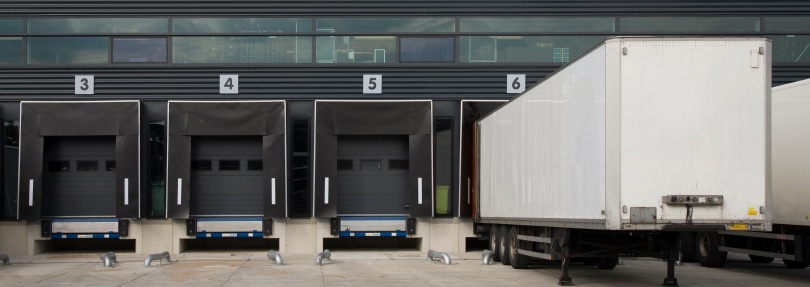Under the Electronic Logging Device (ELD) Mandate, carriers need to keep drivers and equipment moving as efficiently as possible. As a result, companies that want to position themselves as “shippers of choice” are looking for ways to reduce loading and unloading times. For some, drop trailers are an effective option.
What is a Drop Trailer?
A drop trailer is a truck trailer that the driver leaves (or “drops”) at a shipper’s facility for unloading or loading at the receiver’s convenience. Either the original driver or another driver returns to pick up the trailer at a pre-arranged time.
This approach is helpful to carriers for two main reasons. First, without drop trailer capabilities, a carrier must arrive within a set appointment window for the warehouse employees to live-load the trailer. Given shrinking delivery windows, and mandatory rest breaks and other hours-of-service requirements set by the ELD mandate, drivers can easily miss that window.
Second, when carriers do make the delivery window, they’re often made to wait hours for unloading or loading. As a result, the driver loses valuable driving time or misses subsequent delivery windows with other customers. While carriers have traditionally charged shippers for such delays, penalties kick in only after a 2-hour grace period. And the fees don’t make up for lost revenue or loss of standing with other customers (Inbound Logistics).
When to Consider a Drop Trailer Program
Drop trailers aren’t just good for carriers. Under the right conditions, they can offer cost and time-saving benefits for shippers, too. Drop trailer programs are a good option for shippers who:
- Ship Consistent Volume. From a cost perspective, drop trailers typically makes sense when you have at least two shipments per week on a regular basis.
- Struggle with Excessive Load Times. If long loading times are costing you penalties and higher rates, and degrading your relationships with carriers, using drop trailers could help you eliminate fees and even obtain shipper-of-choice status with carriers in a tight-capacity market.
- Need More Space on Docks. Moving freight and the drop trailer to another spot in the yard opens up valuable space on congested docks to create efficiencies in your warehouse.
- Want Greater Flexibility. Tight delivery windows can burden shippers, too. Loading and unloading freight when it works best for your team can make scheduling easier and less costly for everyone.
- Have Enough Space. To make drop trailers a viable solution, shippers need yard space to accommodate extra trailers, as well as room for carriers to move them in and out efficiently.
Access Capstone’s Drop Trailer-Ready Network
Leveraging drop trailers can be an effective way to streamline your supply chain, reduce costs, and potentially improve relationships with carriers. With nearly 20 percent of our overall volume being drop trailer, our strong network is ready to help scale your capacity, even when you have very specific needs.

